September Consumer Tech
Consumer Tech for Fall
The Great American Slowdown in Online services
By Richard M. Sherwin
If you thought the FCC under chairman Pai, a former Verizon lackey, was going to be anti-consumer once net neutrality was lifted, it’s even worse than we predicted. And with the pretty much guaranteed next Supreme Court Judge already on record as wanting to destroy any rules, especially Net Neutrality, on the books, well it’s curtains for any consumer based defenses within the FCC. Case in Point:
“County Fire has experienced throttling by its ISP, Verizon,” Santa Clara County Fire Chief Anthony Bowden wrote in a declaration. “This throttling has had a significant impact on our ability to provide emergency services. This statement was made during the California fires where lives were at stake
So Verizon admits that it turned down the speed of wireless Internet access during last month’s forest fires that might have caused more injuries. Verizon imposed these limitations despite being informed that throttling was actively impeding County Fire’s ability to provide crisis-response and essential emergency services.”
Now Verizon Wireless’ throttling of a fire department that uses its data services has been submitted as evidence in a lawsuit that seeks to reinstate federal net neutrality rules. According to the associated press the Santa Clara, Calif. Fire chief rejected Verizon’s “customer support mistake” excuse for throttling or what regular consumers claim is a slowdown of their browsing capabilities.
Most service providers whether mobile or Internet claimed that the undoing of net neutrality would NOT lead to arbitrary slowdowns, but in just three months the FCC has received more complaints than in the last ten years. Making matters worse, the FCC has stopped taking individual complaints making it harder to fix local regional, and national issues.
Recently Altice (formerly known as Optimum or Cablevision) seems to be slowing down the broadband speed of its top customers because it allegedly can’t maintain 300 mps speeds with its present infrastructure. So from time to time it reduces the speed for consumers down to 90 mps with no notice. The company advertises that it can handle 20 PCs, Tablets, mobile devices, set top boxes in one location, when in reality it can maybe handle six devices before it starts to slow down Internet access making streaming difficult…even though you are paying for this capability.
Frontier Communications, which took over a lot of AT&T’s DSL business, has had trouble maintaining the speed and quality of the phone, Internet and cable TV services they promised their inherited subscribers and may be in noncompliance with some state attorney generals in not adhering to the promises of customer service that they signed when taking over for AT&T.
And the merger of Times Warner and Charter (now called Spectrum) has already resulted in nationwide claims of bad service. If you throw in the remaining mobile and home communications giant AT&T’s record of not handling consumer complaints, you have the nightmare the pro Net Neutrality backers said would come to be. While five or six states are coming up with their own net neutrality laws, it might be too little too late…unless a new democratic controlled congress throws out the Trump-Pai law.
Happier Bytes and Pieces
Epson announced the expansion of its high-speed scanning line with the new Wi-Fi enabled FastFoto FF-680W scanner. Building on the success of its predecessor, the FastFoto FF-640 scanner, the FF-680W is the world’s fastest personal photo scanner, scanning as fast as one photo per second at 300 dpi and up to 36 photos per batch. As an alternative to flatbed scanning and costly scanning services, FastFoto offers an easy and affordable solution to preserving a family’s legacy.
LG Electronics, Inc. is excited to expand on its continued commitment to defining the future of AI with the launch of a new AI research lab in Toronto. The AI research lab will be an extension of the newly expanded AI research lab in Santa Clara and global AI research labs in India, Russia, and South Korea. As AI continues to transform the way we live, LG will continue to drive the evolution of deep learning and advanced AI technologies across multiple touchpoints.
Apple becomes a trillion dollar company even though its much heralded new iPhones still don’t match up to Samsung Galaxy or Huawei new entrants in luxury mobile phones. Also, with its record breaking corporate bankroll, you would think the Cupertino based company might have added a few more tech support people. Recently my iMac and iPhones required tech support and I was told that it would be better going to an Apple store. Except I live hours from a store and the telephone wait was at least 45 minutes. But, alas, those lemmings (Apple supporters) continue to drink the Apple peeling cool aide.
Samsung Appliances Reaching New Low
In our continuing dilemma in trying to replace some still under warranty and some just past warranty Samsung appliances, Lowes, as usual, was tremendous. When the couldn’t repair a refrigerator and dishwasher they gave us full value for the faulty appliances, plus new installation. Because the appliances in question were purchased more than two years ago we went shopping with our trusted sources. It seems to us that Consumer Reports is getting less reliable, we still look at their ratings and also ask advice from retailers like Lowes and Home Depot. The latest reviews from our sources: stay away from Samsung appliances, and be wary of other top brands that are also more unreliable than ever before. So, if you have to buy a major appliance, please get the best extended warranty you can. Something we never endorsed before. And if you’re replacing an older appliance, just know that they don’t make them like they used to.
Dispatches from Tech50plus.com
By Bill Stoller, Managing Editor www.Tech50plus.com

How good can a soundbar be that you can buy for only about $100? If it’s the Vizio SB362An-F6, the answer is: pretty darn good.
It’s no secret that the sound you get from your flat screen TV is, well, usually pretty flat, and no wonder. When they make TVs so thin, there’s little room for the speakers, which often point downward from the bottom edge. You can hook your TV up to an existing sound system or just add a soundbar that either sits in front of the screen or hangs on the wall above or below it, especially if your flat screen is wall-mounted itself.
The Vizio SB362An-F6 is just such a soundbar of many that are out there by Vizio and other companies, and some are pretty expensive, going from over $500 to one that is almost $6000 with a separate subwoofer for better bass.
But for a lot less, this 36-inch Vizio sounds nice & clear with its 2.1 system – that means left & right speakers plus bass. In fact, there are a pair of 3-inch subwoofer bass speakers right on top of the unit (or facing forward if the soundbar is wall-mounted). The Vizio SB362An-F6 doesn’t need a power brick as it plugs right into an electrical outlet, and has three sound inputs: optical digital, 3.5mm analog, or a USB port for playing audio files from a thumb drive. No HDMI but most TVs will have the optical or analog, or both. The optical and analog cables are included, by the way.
All ports plug in underneath the Vizio – a section is left open for them – so if sitting in front of your TV the wires will be almost invisible. Wall-mounting presents a wiring challenge for any soundbar, although the Vizio SB362An-F6 does have two “keyholes” on the back from which to hang it. The soundbar can also be connected Bluetooth to audio from your phone or other devices.
The Vizio soundbar has both Dolby and DTS decoding plus DTS Virtual:X which simulates surround sound even though the speakers are only right in front of you. Pretty neat for a soundbar in this price range. It has TruVolume dynamic compression, which means things don’t go from soft to loud too suddenly.

The small remote that comes with the Vizio SB362An-F6 can not only adjust the volume, but also select the input, turn the surround effect on & off, and there are even EQ buttons for bass & treble to play with. There are also buttons on one end of the soundbar, I guess in case you run out of batteries for the remote.
As I said at the beginning, the Vizio SB362An-F6 sounds very good, even great considering the price – comparable to more expensive models. As we get older our hearing on the high end tends to fade so we turn up the volume. Didn’t have that issue with this soundbar.
The Vizio is listed on their site for $139.99 – although currently out of stock – but seems to be available elsewhere for $98 to $110. For a little bit more there’s the Vizio SB361n-E8, a 2017 cousin which includes a separate wireless subwoofer to boost the bass, if that matters to you.
3 Things to Consider When You Set Up Your Smart Home
By Elaine Thompson www.tech50plus.com
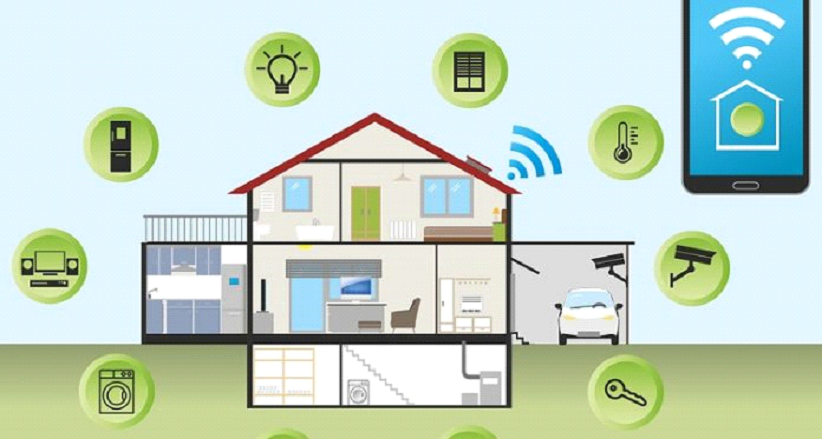
Household chores have been simplified by machines for years now — think dishwashers, washers and dryers, microwaves, etc. And many more jobs are becoming automated every day, even down to the ability to turn on the lights in your house or make dinner.
So much technology is now at our fingertips, and using the latest gadget is easier and more enticing than ever. However, that constant connectivity can sometimes be a bit overwhelming. A perpetual stream of dings from notifications can start to feel noisy and annoying.
But it doesn’t have to be that way. Learning what type of devices to use and how to manage all of them can allow you to take full advantage of technology in your smart home. Keep reading for a list of ways to do just that.
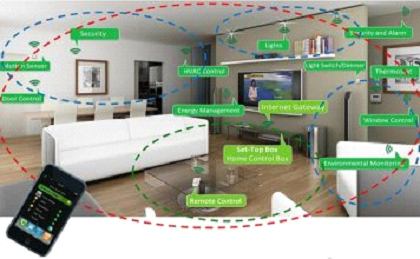
-
Consolidate Your Device Controls
Depending on the number of Internet of Things (IoT) devices you have in your smart home, managing all of them could get to be a bit tiresome, especially if they all use different apps or even protocols—Wi-Fi is fairly common, but plenty of gadgets rely on Bluetooth, Z-Wave, Zigbee, or others. If you go in without a plan, you could end up needing to learn how to control all of the notifications, schedules, and other nuances of each device individually.
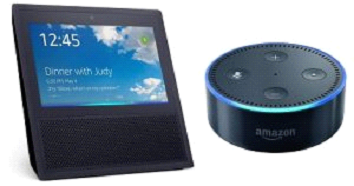
However, if you can pick devices that all connect through the same central hub or app, you can drastically reduce some of that unnecessary noise. Some smart home management apps, such as the Home app for iPhone, allow you to control compatible devices by room or automate your daily routines (like making coffee or going to bed). Setting up your own IoT with one central point is essential to making your devices seamlessly work together without becoming overwhelming or time-consuming.
If you’ve already invested in multiple devices from different ecosystems or protocols, don’t worry. Some hubs and devices—including the Logitech Harmony Elite—can help bridge the divide between different tech types, but you may have to put in a little extra work to get your smart home things running smoothly.
-
Prioritize Your Tech Wisely
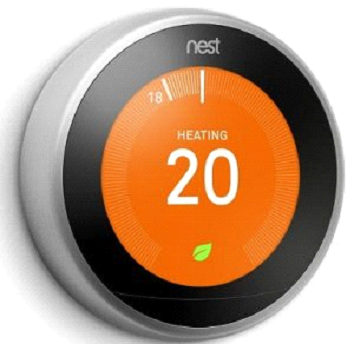
There are many devices specifically designed to help around the home, but chances are you don’t need all of them—at least not at first. Instead, prioritize your smart home tech by figuring out what you truly need from a device. If security is important to you, the Nest Protect or Ring Video Doorbell, D-Link and Netgear webcams can give you more peace of mind. If you care more about efficiency, a Philips Hue system or set of Belkin Wemo Smart Plugs could be right up yowebcamsur alley.
Once you’ve got the basics, you can start looking at other devices to make life a little more fun or easy, like a smart fridge or a connected vanity mirror.
-
Set Your Networks Up for Success
None of these devices will benefit you if they can’t reliably communicate with their hubs or with each other.
Here’s where those protocols come back into play. If your IoT tech relies primarily on Wi-Fi, you may need to upgrade your router. For particularly large houses, a mesh Wi-Fi network might be a sensible solution. Other protocols like Z-Wave, Zigbee, and even Bluetooth in select cases can create a built-in mesh network, with each device boosting the signal automatically. In those cases, slightly repositioning your tech to ensure a clear connection would be the best bet.
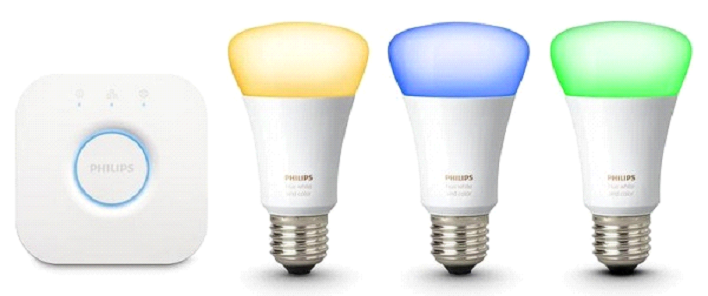
And again, if you’ve got a setup that blends different ecosystems or protocols, you can still make things work; you’ll just have to do a bit more legwork to create a hybrid solution—one that will likely involve bringing devices physically closer to the central hub or installing range extenders.
At the end of the day, extensive smart home automation can take time and cost thousands of dollars. Follow the tips here to ensure you build out a comfortable, useful smart home—and avoid spending resources on things that just don’t need to be automated.
Motorola Deals Four of a Kind
By Gary Kaye, Chief Content Officer www.Tech50plus.com
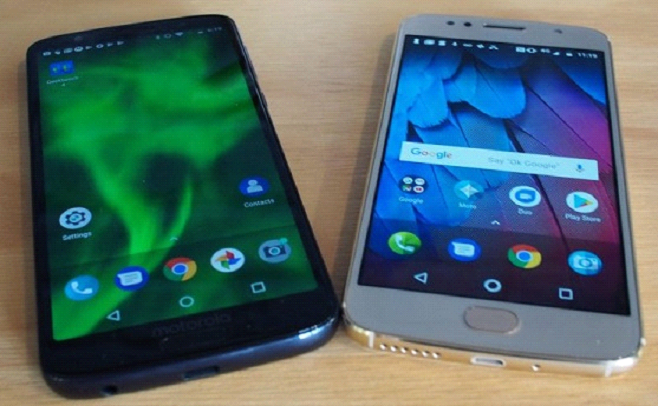
In recent weeks Motorola has introduced four new smartphones, each of which is slightly different from the next. It seems to be along the theme of the Moto mods in which Motorola added accessories such as speakers, cases, battery life extenders, and so on. The four new models in no particular order are the G6, the G6 Play, the E5 Play and the E5 Plus. These are budget phones that still have plenty of features but without the huge price tag of the so-called flagship phones from Apple, Samsung, and LG.
They are, first and foremost, smartphones, so if your primary use is making phone calls, getting texts or email, or surfing the web, all of them will do just fine. If you are looking for a smartphone camera to rival a Nikon or Sony, you should probably look elsewhere. We’ll take a look here at some of the distinguishing features of each.
We found that general appearances among the four phones are comparable as was their performance as phones and Internet surfing devices. There are some differences in processor speed, display size and battery life and especially camera features.
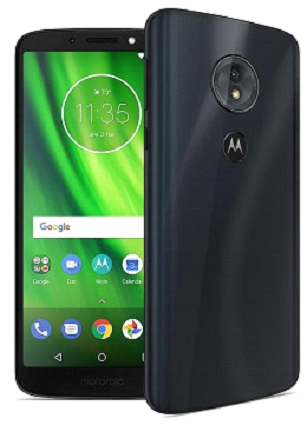
Moto G6 Play
This is the most affordable of the G6 phones. In the US, it costs $50 less than the Moto G6 at about $400. The Moto G6 Play has a lower resolution display and only a single rear camera, but it also has the biggest battery of the three – a 4,000-mAh whopper more capacious than the one found in the Galaxy S9.
Samsung Makes a Push for 8K TV
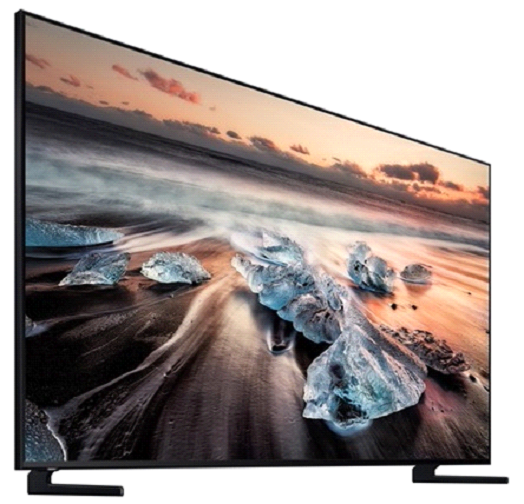
John R. Quain, Editor-At-Large for tech50plus.com
Samsung is pushing the television envelope, taking a “go big, or go home” approach to bringing a better picture to your living room with 8K TV sets.
At the 2018 IFA consumer electronics show in Berlin, the South Korean electronics giant announced it will be introducing a new line of televisions, the Q900R, that roughly double the number of pixels on the screen. Initially available only in the 85-inch screen size in the U.S., the new Q900R isn’t waiting for 8K programs to appear and instead will use its own extensive video processing to convert or “upscale” current programs and video to the higher resolution format.
Current 4K or Ultra HD sets have 3,840 by 2,160 pixels, the high water mark for home TVs. Over the last several years, however, TV makers have demonstrated to the press next-generation 8K TV sets with 7,680 by 4,320 pixels. Some of the screens have been impressive indeed, but with broadcasters unable to offer much 4K let alone 8K material, the assumption was that 8K TV sets were years away. In fact, some manufacturers have struggled to produce 8K screens. (LG’s own 8K OLED set that was to be privately shown to selected members of the press at IFA crashed, and LG had to substitute a 4K set in the back room.)
But Samsung just can’t wait. The company thinks it has a solution to the absence of 8K content, so why hold back?
Samsung’s top-of-the-line LCD TVs already add a layer of quantum dots behind the glass to produce a wider spectrum of colors (hence the QLED nomenclature for quantum dot screens that use an LED backlight). To this, the company is going to apply even more video processing, which it calls artificial intelligence, to fill in the gaps in lower resolution video and bring it up to 8K levels. It’s both a bold move and an acknowledgment that for the foreseeable future, most of what we’ll be able to watch on cable, on disc or online will be 4K or lower resolution.
Is the Picture Really Better?
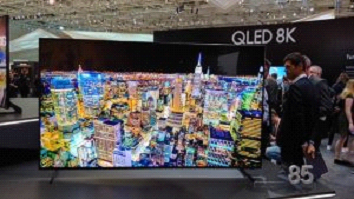
On the IFA show floor in Berlin, Samsung set up a side-by-side comparison with its own 4K and 8K TV sets upscaling various programs. In upscaling Brady Bunch era content, the 4K TV blurred faces and had trouble putting together a coherent picture. The new 8K set did a much better job, sharpening up chins and eyebrows, although still revealing some pixilation and giving some faces a fake animated or CGI appearance. The differences between the two sets were less obvious when upscaling HD content. Both the 4K and 8K TV sets did a reasonable job, although Samsung didn’t pick any material with rapid motion, which would have better shown off any differences.
At the top end – comparing 4K to upscaled 8K content – the differences were more subtle. But there were differences. The 8K Q900R was able to produce deeper greens, richer golds, and more intense highlights, such as the sparkle in diamond jewelry. Whether these differences will translate across all kinds of programming, such as sports and movies, remains to be seen- at least until October. That’s when Samsung expects the 85-inch 8K TV sets to be available in the U.S.
Prices? Well, no one is talking about that yet on the record, but expect screens this size and at this resolution to be in the $10,000 when they debut.
RELATED ARTICLES

- in: Featured
- Post by:

- in: Featured
- Post by:

- in: Consumer Tech, Featured, Technology - How To
- Post by:
Comments are closed.


4 Comments
web hosting companies
Hi there to every body, it’s my first visit of this webpage; this weblog consists of remarkable and truly excellent data
in support of visitors.
adreamoftrains website host
Your style is really unique compared to other folks I have read
stuff from. Thank you for posting when you’ve got the opportunity, Guess I will
just book mark this blog. adreamoftrains website hosting
companies
web hosting companies
Have you ever thought about including a little bit more than just your articles?
I mean, what you say is fundamental and everything.
Nevertheless just imagine if you added some great images or videos
to give your posts more, “pop”! Your content is excellent but with pics and video clips,
this website could definitely be one of the very best
in its niche. Awesome blog!
cheap flights
That is really fascinating, You’re an excessively skilled blogger.
I have joined your feed and stay up for searching for extra of your wonderful post.
Additionally, I have shared your site in my social networks